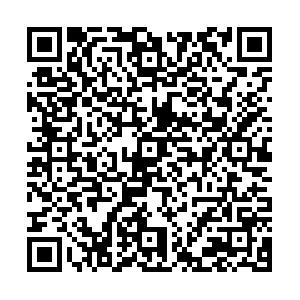Analysis of Single and Multiple Latent Categories of Satisfaction with Online and Offline Teaching for Medical Students Studying in China
-
摘要:
目的 通过比较来华留学医学生线上和线下教学服务质量满意度的差异及影响因素,促进学校来华留学生教育事业高质量发展,提升学校医学教育的国际影响力。 方法 收集2019年新冠疫情前(代表线下)和2021年疫情期间(代表线上)的MBBS学生教学满意,采用潜类别分析探讨14个满意度条目的类别,进一步采用多群组潜类别分析,比较线上和线下满意度的潜类别模式及影响因素。 结果 线上和线下分别收集174例和112例留学生,分为3个潜类别模型(高、中和低满意度组),多群组潜类别分析提示线上教学留学生高满意度的比例较高(55.6%),线下则以中低满意度组为主(43.2%和53.2%)。无论是在线上还是线下教学中,多分类logistic回归结果表明性别、年级和国籍影响是否归属于高满意组(P < 0.05),其OR值分别为1.917、0.591和0.413。 结论 线上教学模式,近一半的留学生是比较满意的,而与之相反,大部分线下教学留学生属于中或低满意组,且男性、低年级、非印度籍留学生均显示相对有更高的教学满意度。 Abstract:Objective This study aims to investigate the differences in satisfaction with online and offline teaching services among international medical students in China and to explore the influencing factors. The ultimate goal is to contribute to the high-quality development of education for international students in China’s universities and enhance the international influence of medical education in these universities. Methods Data were collected from MBBS students before the COVID-19 pandemic in 2019 (representing offline teaching) and during the pandemic in 2021 (representing online teaching). Latent class analysis was employed to identify the 14 satisfaction items. Multi-group latent class analysis was conducted to compare the latent class patterns and influencing factors of satisfaction between online and offline teaching. Results The data from 174 and 112 international students in online and offline teaching, respectively, were classified into three latent class models (high, medium, and low satisfaction groups). Multi-group latent class analysis revealed that the proportion of international students with high satisfaction was significantly higher in online teaching (55.6%) than in offline teaching (43.2% and 53.2% for the medium and low satisfaction groups, respectively). Moreover, regardless of online or offline teaching, multinomial logistic Regression indicated that gender, grade, and nationality significantly influenced whether students belonged to the high satisfaction group (P < 0.05), with OR values of 1.917, 0.591, and 0.413, respectively. Conclusion The findings of this study suggest that online teaching is generally more satisfactory for international medical students than offline teaching. Moreover, male students, lower grade levels, and non-Indian international students tend to have higher satisfaction with teaching. This study provides insights into the optimization of teaching methods for international medical students in China and contributes to the improvement of the quality of international education in Chinese universities. -
表 1 留学生线上和线下教学满意的人数及教学满意率比较[n(%)]
Table 1. Comparison of the satisfaction rate with online and offline teaching for international students [n(%)]
条目 线下(n = 112) 线上(n = 174) 合计(n = 286) P 对教师线上英语教学授课总体上的评价 21 (18.8) 112 (64.4) 133 (46.5) < 0.001 教师内容具有条理性和丰富性 14 (12.5) 104 (59.8) 118 (41.3) < 0.001 教学内容符合学生发展需要 31 (27.7) 100 (57.5) 131 (45.8) < 0.001 教师在课堂中使用多种教学方法 29 (25.9) 105 (60.3) 134 (46.9) < 0.001 教师的教学态度认真、严谨、敬业 23 (20.5) 104 (59.8) 127 (44.4) < 0.001 教师专业知识、技能水平较高 20 (17.9) 106 (60.9) 126 (44.1) < 0.001 教师的跨文化意识强 26 (23.2) 97 (55.7) 123 (43.0) < 0.001 教师积极充实和更新教学内容 14 (12.5) 102 (58.6) 116 (40.6) < 0.001 教师注重知识引入和学生能力的发展 23 (20.5) 105 (60.3) 128 (44.8) < 0.001 教师按学生的需求优化和选择教学方法 36 (32.1) 97 (55.7) 133 (46.5) < 0.001 教师为我们营造民主开放的课堂氛围 10 (8.9) 103 (59.2) 113 (39.5) < 0.001 教师善于调动课堂气氛 15 (13.4) 100 (57.5) 115 (40.2) < 0.001 教师按时上下课,不随意听课调课 23 (20.5) 97 (55.7) 120 (42.0) < 0.001 教师平易近人,尊敬每位同学,公平对待每位同学 17 (15.2) 105 (60.3) 122 (42.7) < 0.001 表 2 留学生传统单组不同潜类别拟合指数
Table 2. Fit indices for traditional single-group latent class models of international students
类别 对数似然比 AIC BIC 熵 自由度 边际潜在类别概率 2 −1475.66 3009.31 3115.33 0.99 256 0.378/0.622 3 −1282.37 2652.75 2813.61 0.98 241 0.351/0.242/0.407 4 −1252.25 2622.49 2838.2 0.98 226 0.350/0.003/0.409/0.214 注:AIC代表Akaike information criterion,BIC代表Bayesian information criterion, 根据3-class模型每个条目的条件概率(见图1),类别1(class1)在全部条目中均有较高的满意度概率,命名其为“高满意度组”。类别3(class3)与其相反,在所有条目中均显示有较低的满意度概率,命名为“低满意度组”。中间的类别2(class2)则命名为“中满意度组”,边际潜在类别的概率(Marginal prevalence for latent class)分别为35.1%,24.2%,40.7%。 表 3 单组潜类别模型和多组潜类别模型多分类logistic回归分析
Table 3. Multinomial logistic regression analysis of single-group latent class model and multiple-group latent class model
单组LCA模型 多组LCA模型 类别1/类别3 高满意度组/低满意度组 OR 标准误 P OR 标准误 P 分组 (线下 vs 线下) 0.029 0.637 0.000 性别(男 vs 女) 0.397 0.341 0.007 1.917 0.184 0.000 年级 (高年级 vs 低年级) 1.286 0.378 0.506 0.591 0.208 0.012 国籍 (印度籍 vs 非印度籍) 2.242 0.375 0.032 0.413 0.229 0.000 类别2/类别3 中满意度组/低满意度组 OR 标准误 P OR 标准误 P 分组 (线下 vs 线下) 1.689 0.467 0.262 性别(男 vs 女) 0.522 0.367 0.078 0.761 0.217 0.209 年级 (高年级 vs低年级) 1.691 0.416 0.208 0.761 0.244 0.263 国籍 (印度籍 vs 非印度籍) 2.424 0.458 0.054 0.925 0.251 0.756 边际潜类别的概率(类别1~类别3) 0.352/0.241/0.406 线上:0.556/0.119/0.325
线下:0.036/0.432/0.532 -
[1] 杨兆山,陈煌. 坚持办教育的人民立场——学习习近平总书记全国教育大会重要讲话精神[J]. 现代教育管理,2019,346(1):1-7. [2] 姚巡,柴桦,米多吉. 疫情期间本科临床医学来华留学生线上实习效果分析[J]. 华西医学,2022,37(1):102-107. [3] 刘帅帅,张露文,陆翘楚. 来华医学留学生在线教育质量初探——以广东省某医学院校为例[J]. 医学教育研究与实践,2020,28(6):1022-1027. [4] 杨慧宇. 新冠疫情后高等教育国际化发展趋势展望[J]. 江苏高教,2021,(1):69-73. [5] 陈武元,曹荭蕾. “双一流”高校在线教学的实施现状与思考[J]. 教育科学,2020,36(2):24-30. [6] 黄梅香,张艺旋,刘红海,等. 2型糖尿病患者抑郁症状的潜在类别分析[J]. 中国慢性病预防与控制,2023,31(1):8-12. [7] 闫纪霞,刘玲霞,史培培,等. 大学生攻击性行为潜在类别与家庭关怀度和生命意义感的相关性[J]. 中国学校卫生,2022,43(12):1817-1821. [8] 温忠麟,谢晋艳,王惠惠. 潜在类别模型的原理、步骤及程序[J]. 华东师范大学学报(教育科学版),2023,41(1):1-15. [9] 应学凤,盛珂炜. “一带一路”背景下外国来华留学生教育状况、问题和启示——以在杭州高校情况为例[J]. 语言与翻译,2020,(1):68-75. [10] 刘婷婷,刘建兰. 当代来华留学生临床医学教育的问题及对策[J]. 中国肿瘤临床,2020,47(18):914. [11] KIM Y,JEON S,CHANG C,et al. glca: An R Package for Multiple-Group Latent Class Analysis[J]. Applied Psychological Measurement,2022,46(5):439-441. doi: 10.1177/01466216221084197 [12] SHAKERKHATIBI M,BENIS K Z,ASGHARI-JAFARABADI M,et al. Air pollution-related asthma profiles among children/adolescents: A multi-group latent class analysis[J]. Ecotoxicology and Environmental Safety,2021,219:112344. doi: 10.1016/j.ecoenv.2021.112344 [13] 宋肖肖,白珊,杨玥娜,等. 来华留学生对全英文授课教学服务满意度量表的信度和效度分析——以昆明医科大学为例[J]. 昆明医科大学学报,2021,42(3):161-165. [14] 程立浩,刘志民. “一带一路”倡议对来华留学的影响效应评估——兼论来华留学生教育高质量发展[J]. 高校教育管理,2022,16(2):110-124. [15] 王婷钰. 我国留学教育的十年回顾与展望[J]. 河北师范大学学报(教育科学版),2021,23(4):73-80. [16] 姜丽萍,庞震. 21世纪20年来华留学生人才培养: 回顾与展望[J]. 天津师范大学学报(社会科学版),2023,(1):31-37. [17] 张文倩,陈瑛翼,程懿,等. 线上线下混合式教学模式在临床营养学选修课教学中的应用对比研究[J]. 华西医学,2022,37(09):1371-1376. [18] 雷浩. “后新冠疫情时代”医学生线上线下混合教学满意度调查——以浙江大学医学院为例[J]. 中国高等医学教育,2022,(3):41-42. [19] 吴昊,何江川. 广西大学生与东盟七国留学生心境状态差异性分析[J]. 中国学校卫生,2015,36(2):286-288. [20] 于洗河,徐庆辉,潘双翼,等. “一带一路”视阈下发展印度来华医学留学生教育的策略研究[J]. 中国高等医学教育,2017,(5):29-30. -






 下载:
下载:


